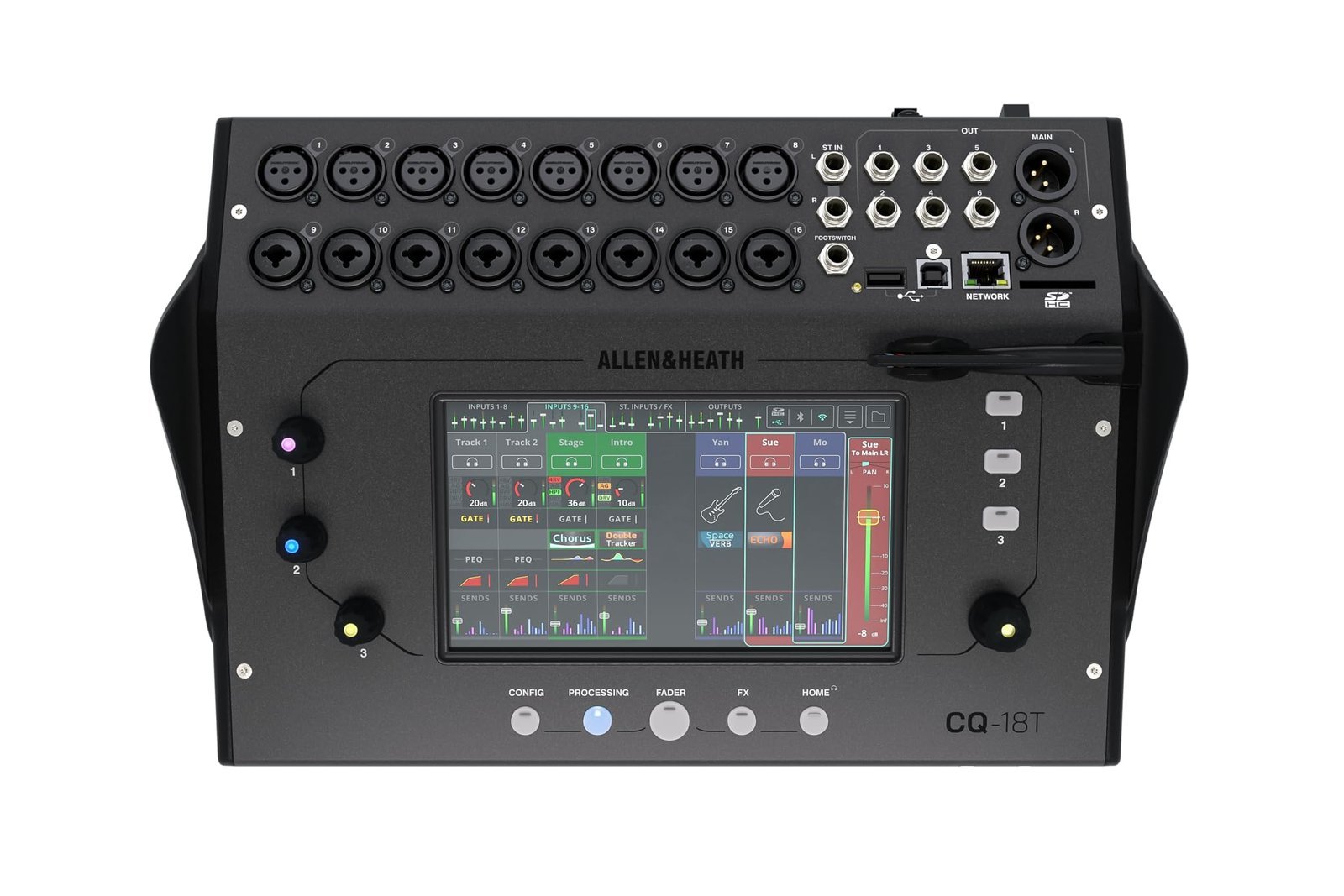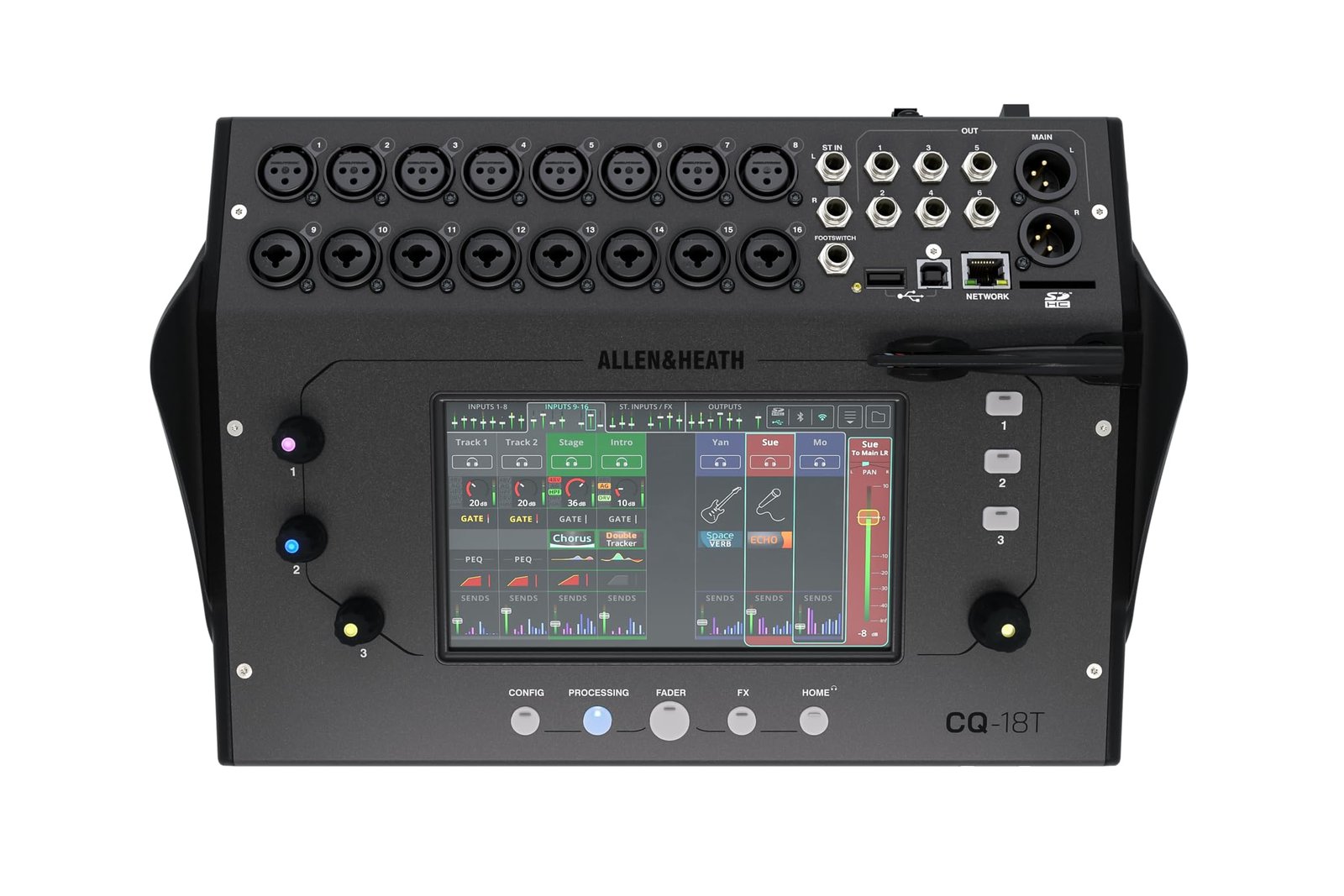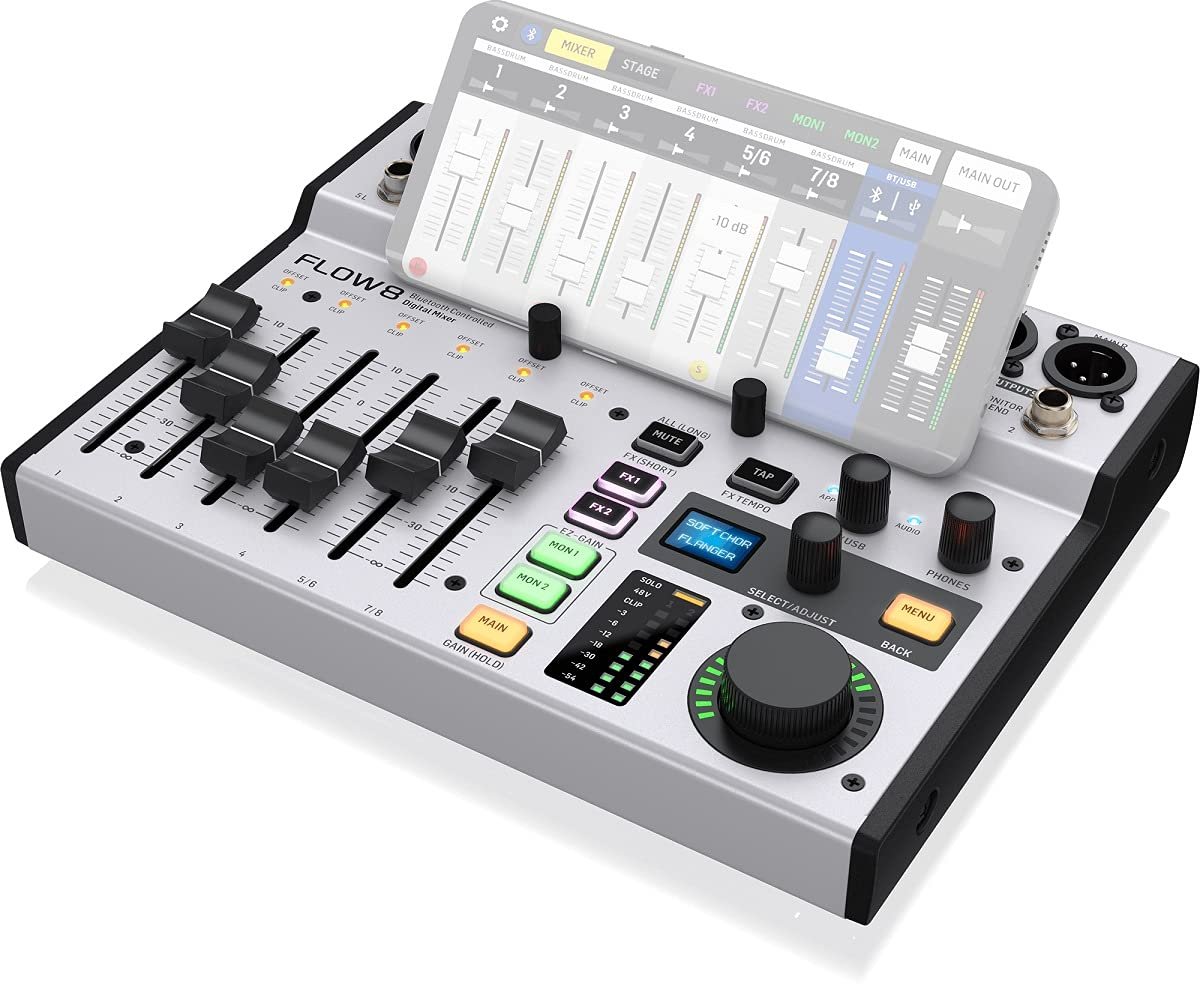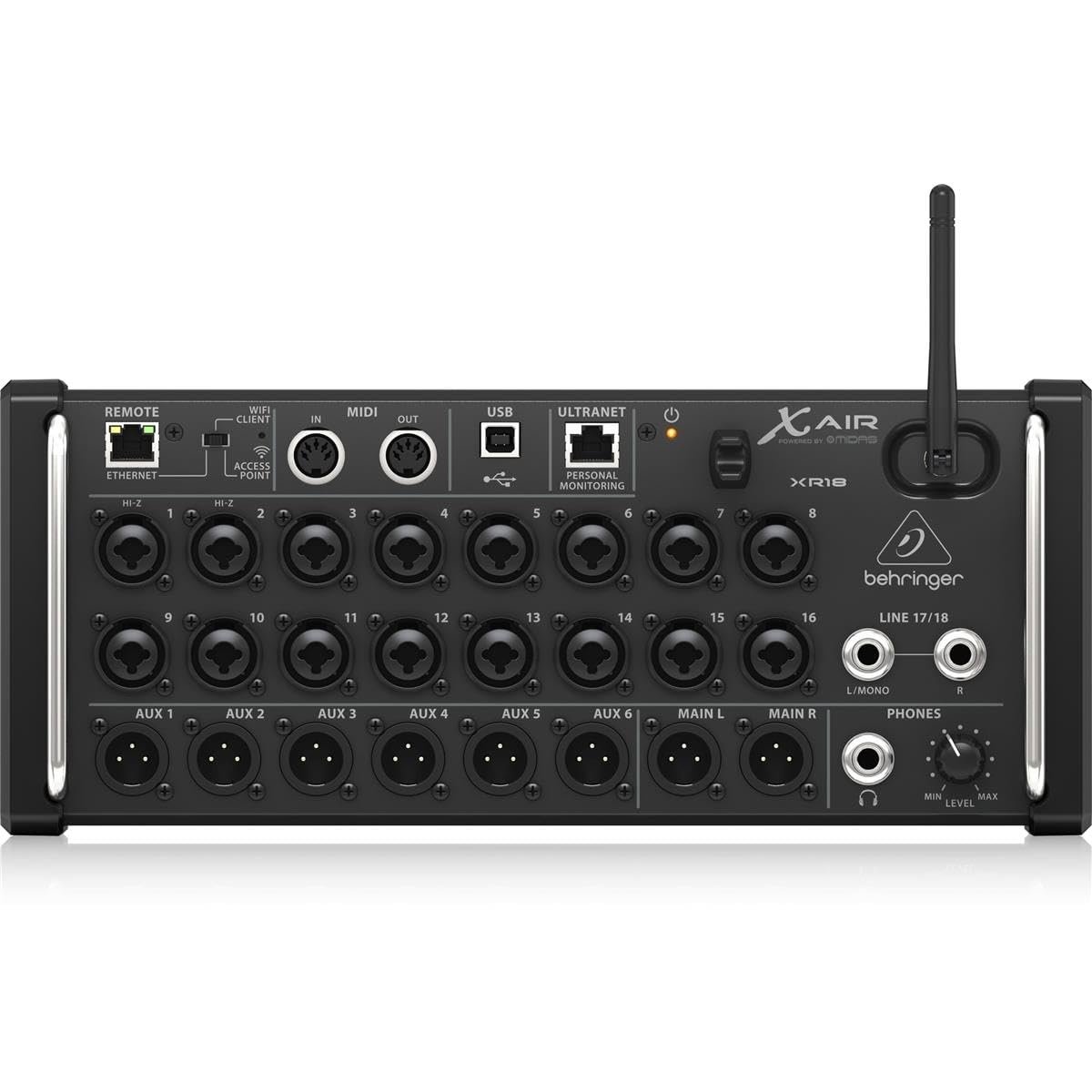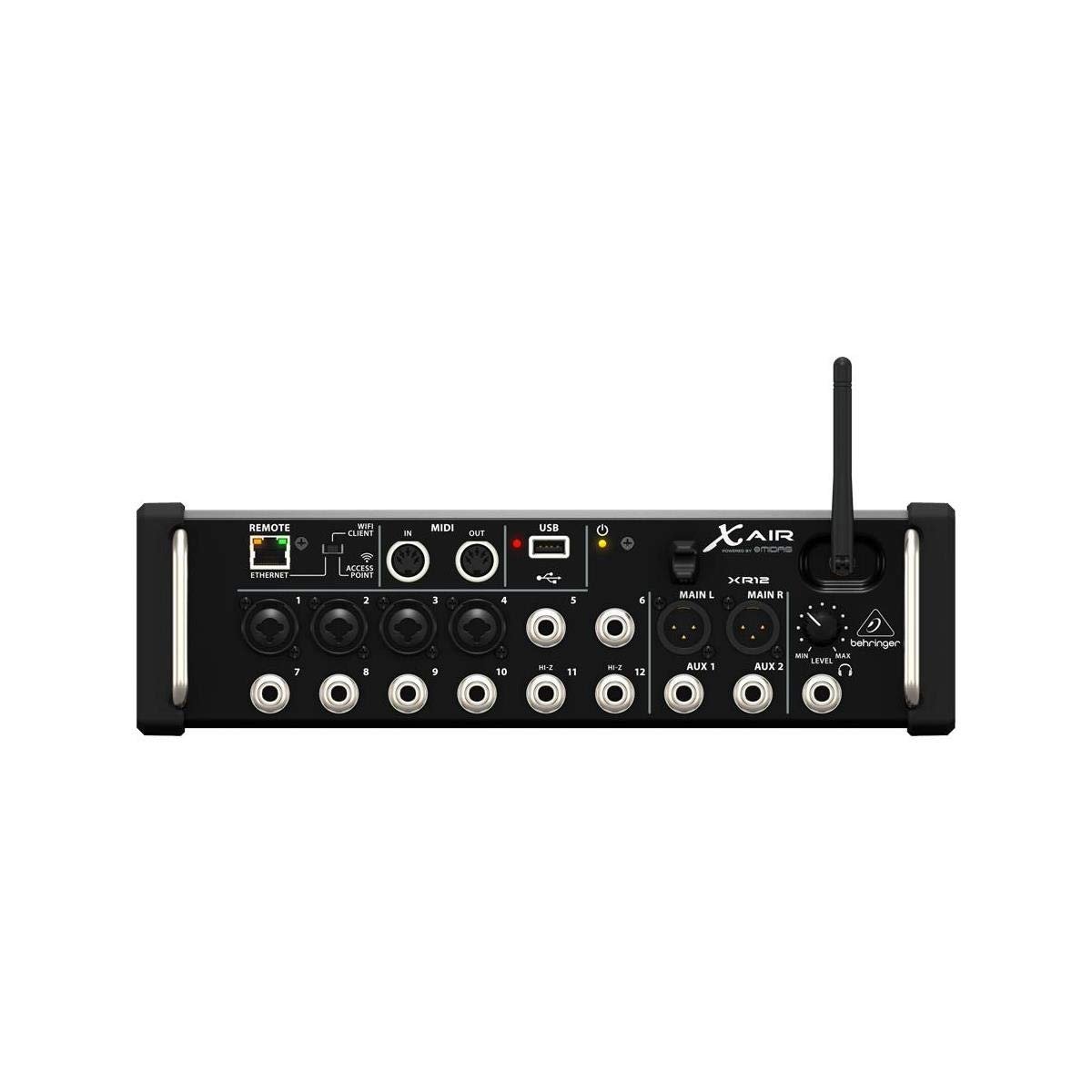Digital mixers are an essential tool for anyone serious about audio production.
Whether you’re working in a studio, broadcasting live events, or producing your latest podcast, digital mixers provide flexibility and precision that traditional analog mixers cannot match.
They integrate seamlessly with digital audio workstations (DAWs), making them a cornerstone in modern audio setups.
Unlike analog mixers, digital mixers offer a host of features like built-in effects, easy recall of settings, and the ability to save and load sessions.
These mixers are especially beneficial for live sound engineers who need to adapt quickly to changing conditions during events.
With digital mixers, latency is minimal, making it easier to handle real-time audio adjustments without compromising sound quality.
When shopping for a digital mixer, there are a few critical aspects to consider.
Connectivity options are crucial; make sure the mixer has the right inputs and outputs for your gear.
Also, pay attention to the user interface and controls.
They should be intuitive enough to allow easy navigation.
Finally, consider the size and portability if you plan to move the mixer between different venues.
Picking the right digital mixer comes down to identifying your needs and matching them with the mixer’s capabilities.
Top Digital Mixers
You’re in the market for a digital mixer, and we’ve got you covered with some top picks.
Whether you’re a beginner or a seasoned pro, there’s something here for you.
Dive into the list and find the mixer that suits your needs.
Allen & Heath CQ-18T Mixer
Looking for a compact digital mixer that’s easy to use and loaded with smart features? The Allen & Heath CQ-18T might be the perfect fit for you.
- Smart and user-friendly design.
- Rich connectivity options, including Wi-Fi and Bluetooth.
- Compact and portable, suitable for various environments.
- Lacks sub-groups, which might limit advanced routing needs.
- The interface can be a bit slow when accessing certain controls.
- May fall short on channel count for larger setups.
This mixer stands out with its impressive feature set in a compact form.
You can control it easily through the 7″ touchscreen or wirelessly, which adds great flexibility, especially in fast-paced environments.
Plus, the built-in Wi-Fi and Bluetooth make connecting your devices seamless, whether you’re in the studio or on stage.
Portability is one of its biggest strengths.
The simple design makes it ideal for both beginners and those who need to transition quickly from one setting to another.
Its durable build gives the assurance of reliability, while the inclusion of hands-on controls ensures you have everything you need at your fingertips.
On the downside, some advanced users might miss features like sub-groups, and the interface might not seem as quick when toggling through detailed settings.
If you anticipate using multiple channels for complex projects, you might need to consider whether its channel count meets your demands.
Behringer FLOW 8 Digital Mixer
An excellent choice for those seeking versatile sound management with the convenience of app control.
- Remarkably low noise levels ensure clean audio.
- Convenient wireless control through a smartphone app.
- Intuitive auto-gain feature optimizes sound levels efficiently.
- Navigating the app may take some practice.
- Limited number of preamps compared to larger models.
- Initial setup might be a bit complex for beginners.
The Behringer FLOW 8 is packed with features that make managing your audio a breeze.
It stands out with its ultra-low noise performance, providing you with crisp, clear sound even in demanding settings.
The added convenience of controlling your mixer via a Bluetooth-enabled app on your phone or tablet means you have flexibility at your fingertips, making it perfect for dynamic environments.
This mixer isn’t just about digital connectivity—it also includes EZ-Gain technology, which intelligently adjusts signal levels for optimal headroom.
Whether you’re a mobile DJ or a small band performer, you’ll appreciate how much this feature streamlines your workflow and enhances sound quality.
You might find the initial setup a bit overwhelming, especially if you’re new to digital mixers.
Once you get accustomed to its features, the Behringer FLOW 8 proves to be a compact yet powerful tool that redefines ease and quality in sound mixing.
Behringer XAir XR18 Mixer
For those seeking a versatile digital mixer to pair with tablets, the Behringer XAir XR18 offers robust features and excellent sound quality.
- Easy integration with tablets
- High-quality preamps
- Built-in Wi-Fi for remote control
- Learning curve for beginners
- No physical controls
- Wi-Fi connection can be unstable in crowded networks
This mixer is suitable for musicians looking to cut down on cumbersome equipment and manage setups more efficiently.
With its 16 programmable MIDAS preamps, you access pristine sound.
Running sound through your iPad or Android tablet makes it a flexible choice for tech-savvy users.
The integrated Wi-Fi module allows you to control mixes remotely, which is very practical for live performances.
Despite the reliance on a stable Wi-Fi connection, most users find that once configured, the connection remains reliable.
While it’s perfect for seasoned audio engineers, beginners might find the learning curve a bit steep.
Make sure to dedicate some time to getting familiar with the interface and controls before using it in a live setting.
Behringer X Air XR16 Digital Mixer
The Behringer X Air XR16 is a flexible option for those needing a versatile digital mixer with built-in Wi-Fi capabilities, especially if you want to control it with a tablet.
- Convenient built-in Wi-Fi connection
- Impressive audio quality for 16 channels
- Easy stereo WAV recording and playback through USB
- Initial setup can be cumbersome
- Some users report connection issues
- Limited to 2.4GHz Wi-Fi
This Behringer digital mixer brings the convenience of wireless control right to your fingertips.
Its integration with tablets and other devices makes it a handy choice for those who appreciate flexibility during live performances or recording sessions.
With its built-in Wi-Fi module, you won’t have to worry about extra gear to manage your mixing needs.
Despite the ease it offers, some users find the initial setup a bit challenging.
This might mean spending a little extra time getting everything ready for its first use.
Some users have also noted difficulties connecting to Wi-Fi, hinting that you might prefer using an external router for greater stability.
However, the audio quality shines once you’re past these hurdles, letting you mix with confidence.
Perfect for small club settings or personal studios, this device lives up to its promises with dependable results.
Whether you’re a budding sound engineer or an experienced music producer, the Behringer X Air XR16 could be a solid addition to your audio toolkit.
Behringer X Air XR12
This mixer is a great choice if you need a budget-friendly option with impressive sound quality and flexibility for studio and live performances.
- Excellent sound quality with programmable MIDAS preamps
- Convenient remote control through apps on various devices
- Built-in Wi-Fi for easy setup and use
- Some users may find initial setup challenging
- Occasional connectivity issues reported
- Limited to smaller gigs due to size
The Behringer X Air XR12 packs a punch with its 12-input feature and high-quality MIDAS-designed mic preamps, ensuring your sound is as clear as can be.
With the ability to control this mixer using your tablet or phone, you’ll enjoy the freedom of making adjustments on-the-go without needing to be tied down with physical controls.
Another standout feature is its built-in Wi-Fi router.
There’s no extra need for external devices, simplifying your audio setup considerably.
On the downside, some users have noted initial hiccups with app connectivity and setup.
It requires a bit of patience to get everything running.
Given its compact nature, this mixer is better suited for smaller bands or home studio setups, but don’t let its size fool you.
Once you dive into its features, you’ll find it packed with the essential tools you need to hone your craft and take your sound to the next level.
Buying Guide
When choosing a digital mixer, budget is a great starting point.
Figure out how much you’re willing to spend.
Prices can vary widely, so having a clear budget helps narrow down your options.
Inputs and Outputs: Consider how many instruments and microphones you’ll be connecting.
If you have a large setup, you’ll need a mixer with more channels.
Check for multiple outputs if you want to connect to different speakers or recording devices.
Portability: Think about where you’ll use the mixer.
If you’re always on the go, a compact, lightweight model might be the best fit.
On the other hand, a larger setup in a fixed location might benefit from a bigger mixer with more capabilities.
Look into the features you need.
Do you require built-in effects, equalizers, or Bluetooth connectivity? Having these features integrated can simplify your setup.
Ease of Use: Digital mixers come with a variety of interfaces.
Some have touchscreens, while others rely on physical knobs and sliders.
Make sure it’s something you’re comfortable using, especially in a live setting where quick adjustments might be necessary.
Consider software integration if you plan to use a digital audio workstation (DAW).
Some mixers offer better compatibility and advanced control options, which can significantly enhance your workflow.
Durability and Build are also key, especially if your gear will be moved often.
Check for solid construction and reliable components to ensure it withstands regular use.
Warranty and Support: Don’t forget to look at the warranty and customer support.
This can offer peace of mind and assistance if things don’t go as planned.
Frequently Asked Questions
Choosing a digital mixer involves considering factors like home studio requirements, channel count, and the pros and cons compared to analog mixers.
Digital mixers offer unique features that are essential for live sound and integrating with existing audio setups.
What is the best digital mixer for home studios?
For home studios, you want a digital mixer with a compact form factor and the capability to handle multiple inputs.
Brands like Behringer and Yamaha offer mixers with user-friendly interfaces and USB connectivity, catering to professional home studio needs.
Focus on mixers that have built-in effects and easy DAW integration.
How does channel count affect the choice of a digital mixer?
The channel count determines how many simultaneous audio sources you can manage.
For larger setups, aim for higher channel counts to accommodate different microphones and instruments.
On the other hand, a smaller studio might only require a mixer with eight to sixteen channels.
Choose based on your current and potential future needs.
What are the differences between digital and analog mixers?
Digital mixers usually provide more features like onboard effects, automation, and presets.
Analog mixers often offer a warmer sound and are simpler to operate without menus and layers.
Decide based on your workflow preference; digital mixers are versatile but can require more technical knowledge.
Can digital mixer software replace a physical console for live events?
While digital mixer software can handle mixing tasks, it may lack the immediacy and tactile control of a physical console during live events.
Physical consoles offer dedicated knobs and faders for real-time adjustments, which are crucial in dynamic live settings.
Software may complement hardware but not fully replace it for live sound.
How do I integrate a digital mixer into my existing audio setup?
Integration typically involves connecting your digital mixer to your audio interface or computer.
Use USB, FireWire, or network connections as needed.
Check if your mixer has compatibility with your DAW for seamless control.
Proper cabling and sometimes additional software drivers are necessary for optimal performance.
What features should I look for in a digital mixer for live sound?
When looking for a digital mixer for live sound, prioritize features like rugged build quality, easy navigation, and reliable connectivity.
Look for mixers with built-in effects and wireless control options for flexibility during performances.
Also, consider the number of outputs required for monitoring and speaker connections.
Make sure the mixer fulfills all live sound demands.

